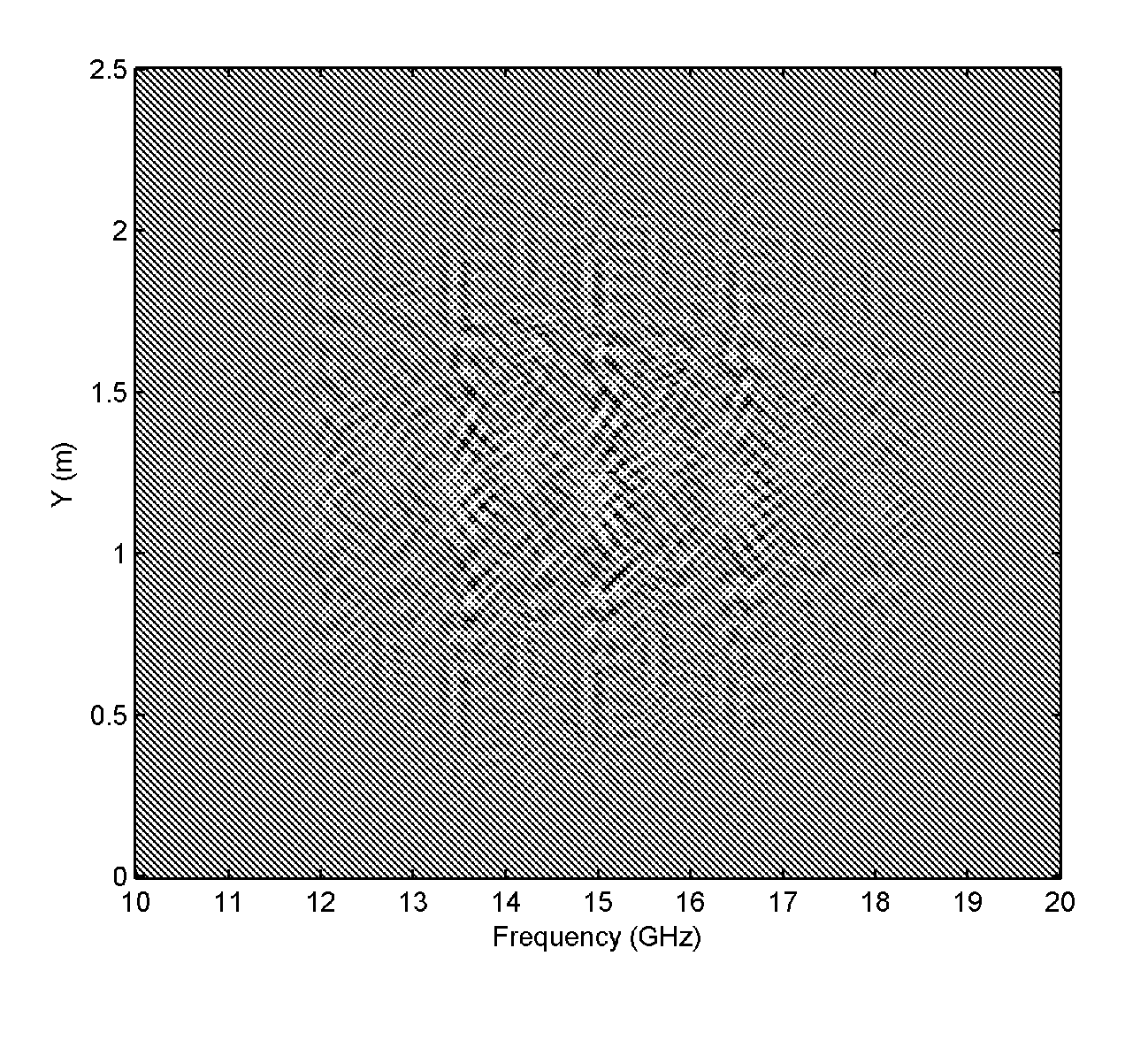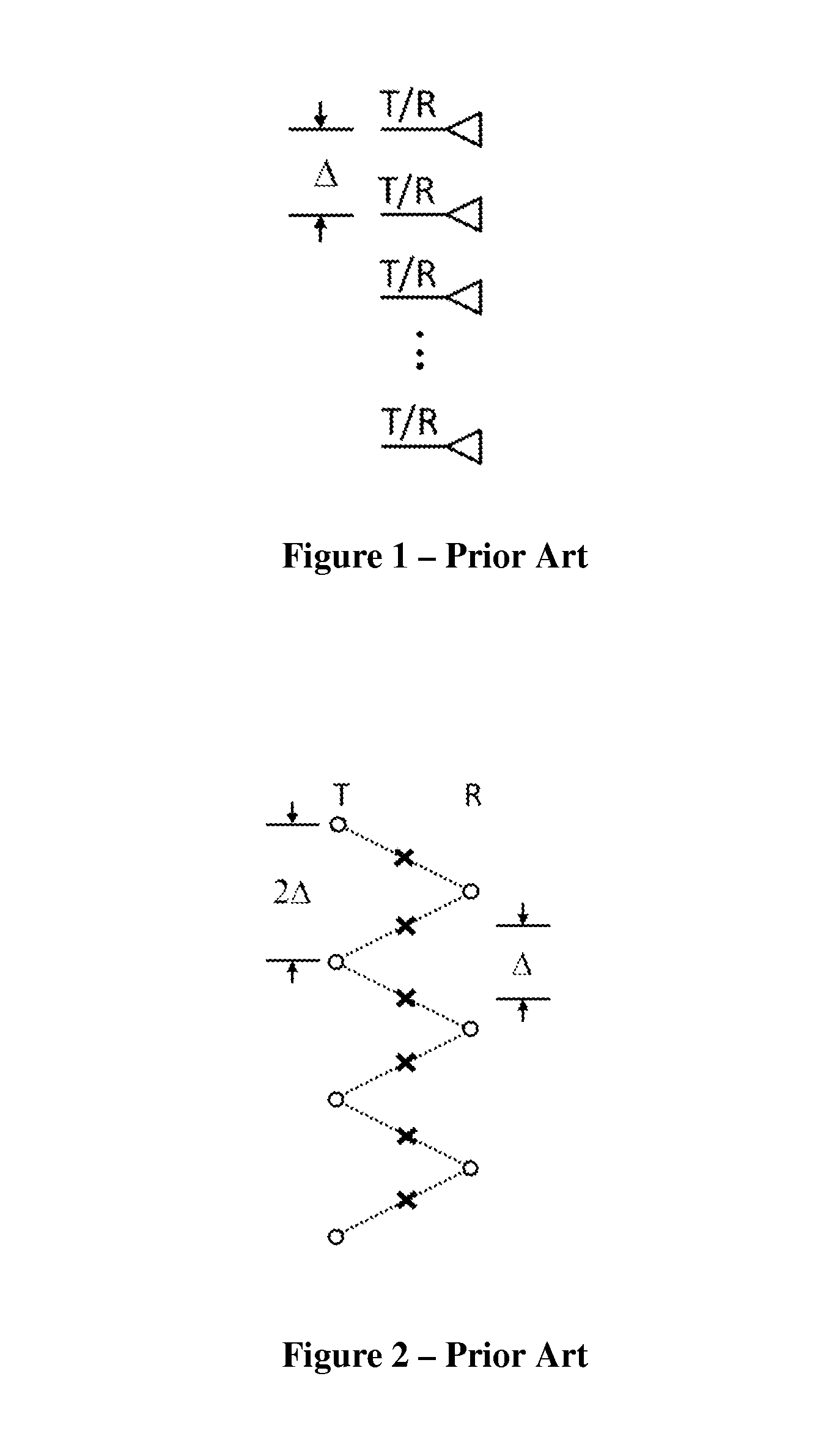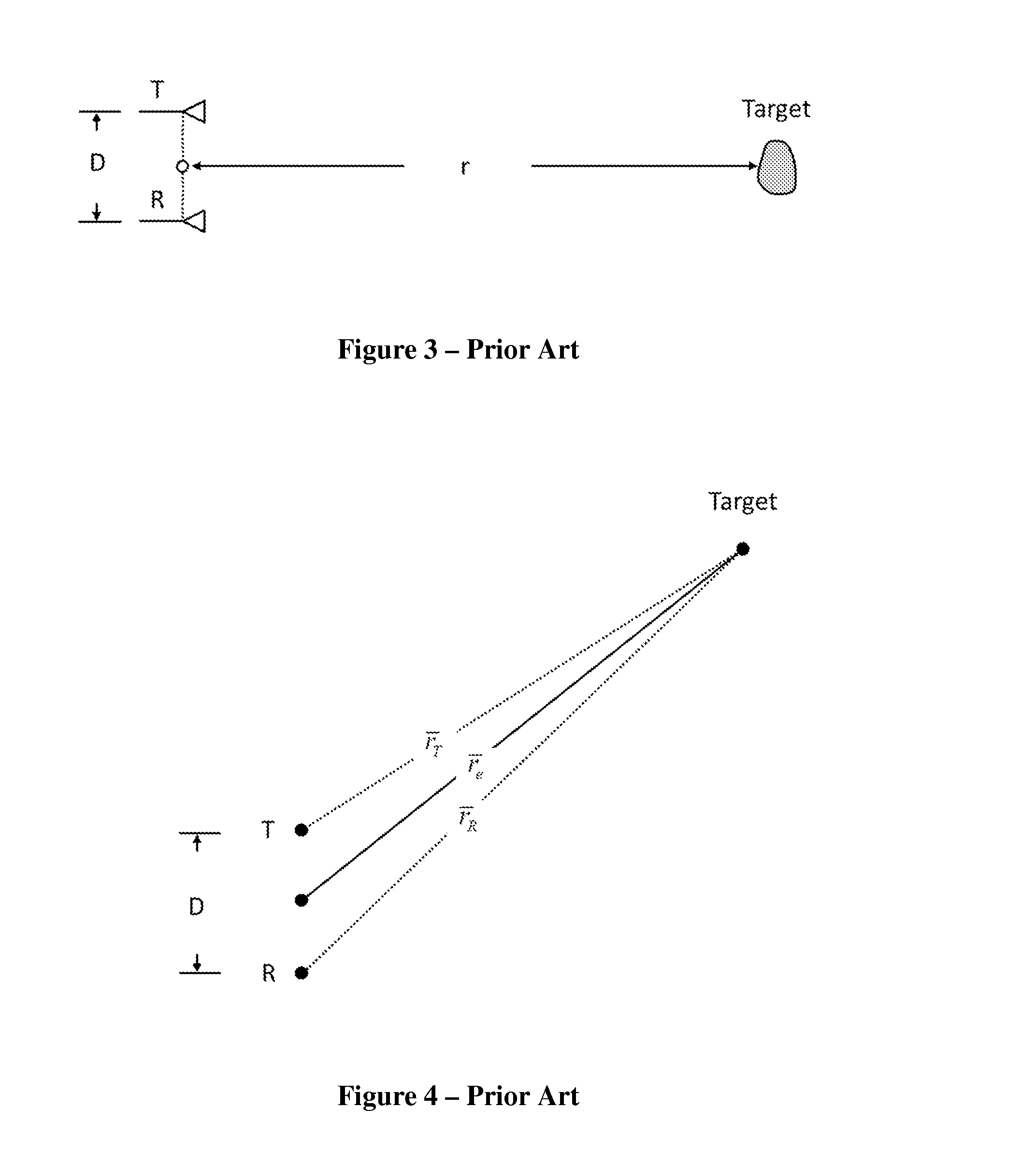Apparatus for synthetic imaging of an object
a technology of synthetic imaging and apparatus, applied in the field of synthetic imaging, can solve the problems of inability to achieve, introduce additional losses, and inability to easily achieve microwave/millimeter-wave transceivers
- Summary
- Abstract
- Description
- Claims
- Application Information
AI Technical Summary
Benefits of technology
Problems solved by technology
Method used
Image
Examples
Embodiment Construction
[0044]The present invention is directed to apparatuses for and methods of synthetic imaging of an object. Advantages and benefits of the present invention compared to the prior art include the following. The present invention reduces the number of transmit and receive antennas required to densely sample a linear axis. The present invention also provides a single column of virtual samples. In addition, the present invention maintains dedicated transmitters and receivers, ideally as separate columns of a two column array.
[0045]The present invention allows antennas that may be up to several wavelengths wide in both cross-sectional dimensions. This may require that both transmit and receive arrays are reduced in antenna count.
[0046]The present invention provides uniform spatial effective sampling, which may be needed for low-artifact imaging and Fourier Transform-based image reconstruction. The present invention further provides dense sub-wavelength effective sampling, which may be nece...
PUM
 Login to View More
Login to View More Abstract
Description
Claims
Application Information
 Login to View More
Login to View More - R&D
- Intellectual Property
- Life Sciences
- Materials
- Tech Scout
- Unparalleled Data Quality
- Higher Quality Content
- 60% Fewer Hallucinations
Browse by: Latest US Patents, China's latest patents, Technical Efficacy Thesaurus, Application Domain, Technology Topic, Popular Technical Reports.
© 2025 PatSnap. All rights reserved.Legal|Privacy policy|Modern Slavery Act Transparency Statement|Sitemap|About US| Contact US: help@patsnap.com



